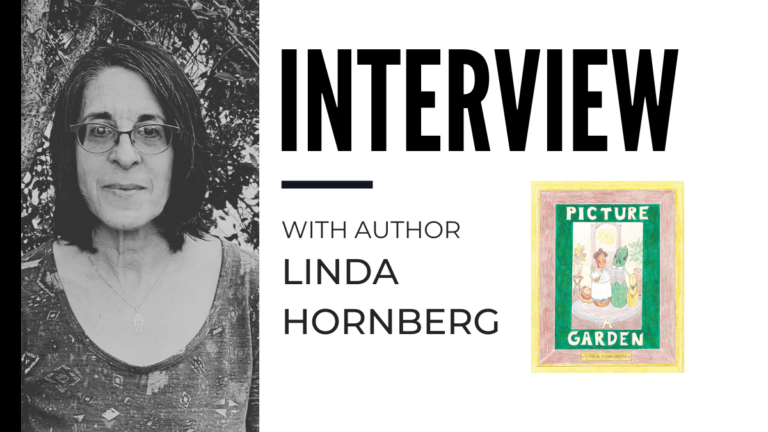This is an interview about Picture a Garden, presented in partnership* with Linda Hornberg and The Children’s Book Review.
This engaging interview with Linda Hornberg, author of Picture a Garden, offers a delightful glimpse into the creation and content of her unique book.
Hornberg, a seasoned horticulturist and artist, shares her journey from writing seasonal gardening newsletters to crafting a hand-lettered, illustrated book that appeals to readers of all ages. With a background steeped in both fine arts and horticulture, Hornberg brings a fresh, humorous approach to gardening education. She discusses her use of wordplay, hand-drawn illustrations, and a non-linear format to make learning about plants and gardening both enjoyable and accessible.
Throughout the interview, Hornberg’s passion for nature, her commitment to dispelling gardening myths, and her desire to inspire curiosity in readers shine through, making it clear why Picture a Garden stands out in the world of gardening literature.
Bianca Schulze: What inspired you to write Picture a Garden?
Linda Hornberg (LH): Most of these stories were adapted to book format from an original series of kids’ gardening newsletters I created over a twenty-year career at the local retail nursery. Each month, a seasonally relevant topic was selected, and I would sit down to free-associate on the page with the goal of educating and entertaining Seattle’s “growing gardeners”. The commitment to transform a selection of eighty legal-sized individual sheets into a 150-page, hand-lettered book happened when my publisher, Elliott Wolf, saw the newsletters. He insisted I do this book right away, in lieu of my personal history of confused, confounded, and conflated conquistadors. Sensible advice for a publishing debut.
Can you tell us about your background in gardening? How did you accumulate the knowledge shared in the book?
LH: I am still very much the child who happily lost all sense of time and civilization while observing insect behavior or collecting leaves to press in a book. Both my own mother and hers were city kids who found a way to enjoy their love of flowers by tending a tiny Brooklyn rooftop garden. I helped plant and weed alongside Mom in the purely experimental suburban garden that surrounded my childhood home. There was always a stack of seed catalogs in the living room, and one in particular, Wayside Gardens, provided me with an early education in plant identification and taxonomy. As part of an adult career change, I returned to college to study horticulture. My fine arts degree and professional nursery certification combined on the page with the joy I derive from cooperating with nature.
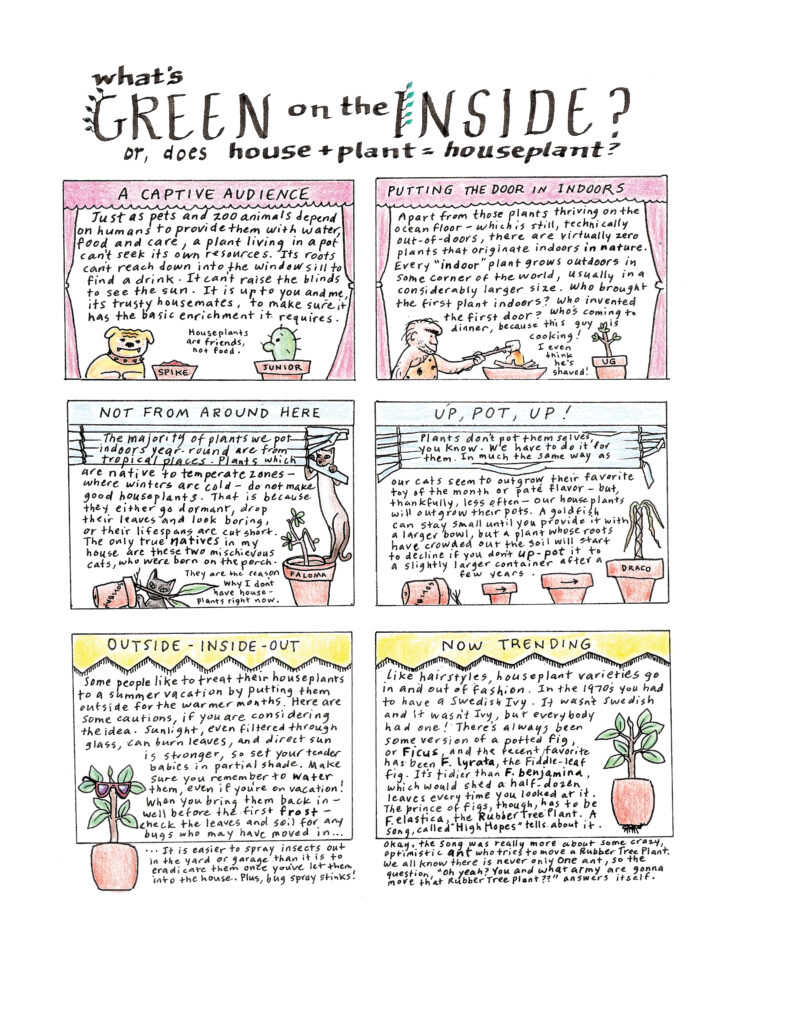
The book is structured with chapters bearing clever, punny titles. How did you come up with these witty headings, and how do you believe humor aids in educating readers about gardening?
LH: I speak three languages: English, Spanish, and Punish. The same people who cringe at the very mention of a pun will never successfully complete a crossword puzzle because punning is a mode of thinking. I inherited an affinity for puns and crosswords from my dad, so wordplay is essentially in my DNA. All language is invented and continually evolving. Many scientific words are amusing to the ear (peduncle) or, frankly, barely pronounceable (Sciadopitys). I am, for example, attempting to explain the distinction between a petiole (the short stalk attaching a leaf to a plant stem, or axis) and a pedicel (the short stalk attaching a flower-then-fruit to a peduncle), without sounding purely pedantic (like a boring know-it-all). Many of my story headings employ my favorite wordplay form, the portmanteau, more commercially known as a “sniglet.” It was a fun challenge to join two words to create a third or make a double entendre. Humor breaks the ice and keeps a nonfiction work from reading like a stuffy textbook. Learning should be an enjoyable experience.
The book caters to a wide age range, from kids to adults. How did you balance the content to appeal to such a broad audience?
LH: As a young reader, I appreciated everything from nonsense verse to encyclopedias. I still do, actually. Among my own recent book purchases are wordless picture books, graphic novels (or as Lynda Barry more accurately calls them, visual literature), and historical reference books. I spent eight years as a classroom volunteer in my son’s elementary school, helping with art, math tools, garden club, and literacy. Nothing should be “dumbed down” for children; help them to interact with knowledge, not merely absorb and memorize data. No one else can learn for you, and I am troubled by the steady and accelerating creep of our reliance upon machine learning (artificial intelligence and wiki info-bytes) as a substitute for empirical study and critical reasoning. Too many adults have lost their childlike curiosity. Does Picture a Garden address these concerns? My aim is to stimulate enthusiasm for knowledge across all generations of readers while championing the rights of earthworms and lowly mosses!
Picture a Garden can be read cover-to-cover and randomly flipping to pages. How did you decide on the unique formatting of this book?
LH: The function of most illustrations is to clarify and augment the accompanying text. It also helps to brighten up the page. Botanical discussion calls for botanical diagrams, but who says a flower can’t have an opinion of its own? I am a cartoonist at heart, and I approached every page of this book with the words and images intertwined. Every mark contained within the stories—including text— was done by hand, in actual size, and the limitations of the 8×10 inch page, with margins for numbering and binding, made me selective in my editorial choices. Some of my plants escaped the borders, just like they are prone to do in the garden.
Your hand-drawn illustrations are a key feature of the book. Can you describe your artistic process and how you integrated the visuals with the text?
LH: As a non-fiction reference guide, the book is arranged in ten chapters, with a proper table of contents at the front. The chapters are not strictly chronological, nor are the stories within each of them linear. I am a fan of short stories, especially for passing the time in waiting rooms or while traveling, because each one is self-contained and can be read in full in a limited amount of time. The first thing I do —after judging a book by its cover, title, and maybe its back cover synopsis— is open to a random page and check out the writing style. Even a reader with a short attention span can fit a quick story into their day. The pun-averse may run a mile; everyone else is welcome to stay, read in any order they choose, and laugh and learn as they go.
Are there any particular gardening myths or misconceptions that you were particularly keen to dispel in your book?
LH: Barbarous pruning is my pet peeve. I believe I restrained myself and broached the topic as gently as I could while calling out the senseless crime of tree butchery. A big part of my nursery job was to field customer questions regarding plant selection and care. Over my 25 years of public horticulture outreach, I’m most pleased to see that the message of choosing organic and earth-friendly solutions is triumphing over the “just nuke ’em with chemicals” approach. I did marvel, however over the steady stream of customers who somehow missed the grade school science lesson about pollination (no flowers=no bees=no fruit), or the reason why deciduous trees drop their leaves, or the fact that those leaves free up the oxygen we all must breathe.
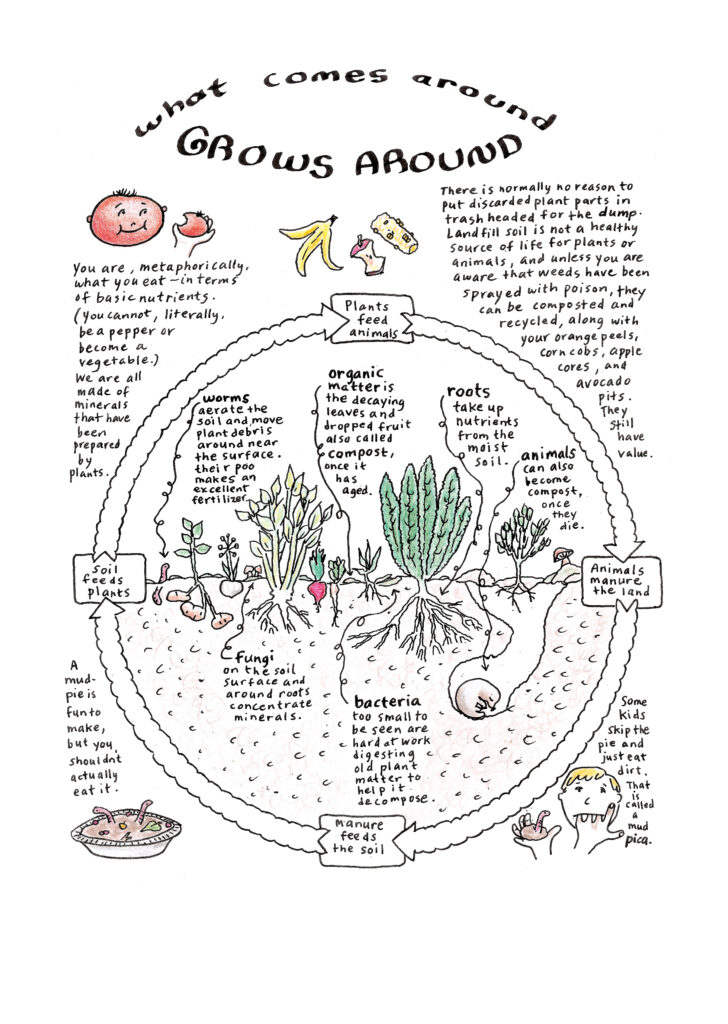
Can you share a favorite pun or illustration from the book and the story behind it?
LH: Meloncauliflower, a portmanteau that plays with the “cholia” in melancholy, and the melodrama of a reality TV series about a family of melons, is a good example. (A Melondrama?) This story starts a two-page spread showcasing the lives of opinionated and misunderstood foods and their biological relationships. I introduce Cucurbits: squash, melons, calabashes —many of which are prepared in our kitchens as vegetables, but all of which are fruits — as relatives in the botanical family, Cucurbitae. (Sound like cucumber, that wonderfully refreshing summer fruit?) The facing page introduces the Brassicas or Cruciferae, which include the edible flowers of broccoli, the vitamin C and sulfur-rich cabbages, and other such vegetables kids push to the edge of their plates. They have a tale to tell, placing them among the earliest cultivated crops known to humans, who devoured them without cheese sauce!
How do you hope Picture a Garden will impact its readers, especially in terms of their approach to gardening and plant care?
LH: I sincerely mean that there is room in the garden for everyone. There is no limited, fixed definition of a garden, just as a garden, by its very Nature, is never finished or static. If someone is intimidated at the prospect of choosing the wrong plant or hindered by the idea that their outdoor oasis has to meet the neighbors’ standards, I hope that my encouragement to “think outside the flower box” will put them at ease. The “wrong” tree is the one that will quickly outgrow its planting spot, but that doesn’t mean there are no equally appealing alternatives. There is no such thing as a mandatory garden plant, but there are some that are better avoided. Library and bookstore shelves overflow with garden design guides, almanacs, planting manuals, horticultural encyclopedias, and coffee-table photographic tours of world-class gardens visited annually by thousands and maintained by invisible fleets of dedicated caretakers. To this array, I add my humble offering. Find the garden that is right for you; picture it, and make it happen in your own space, at your own pace.
Are there plans for follow-up books or related projects that build on the success of Picture a Garden?
LH: I spent the entirety of last spring and summer at the drawing board, seven days a week, diligently scribbling away at this book, to the near total neglect of my garden. Somehow, I managed to water just enough to keep my 23 trees alive. I pruned the crazy jungle vines with my left hand to spare my right for the delicate lettering and line work. This summer, I am heartily rediscovering the rewards of weeding and reclaiming overgrown paths. While I have enough untapped plant stories to create a second volume, I also have three completely unrelated partial manuscripts to choose from. One is the heavily researched history project I set on the back burner to draw talking zucchinis. Whichever book comes next, expect curious facts, twists on previously held wisdom, quirky illustrations, and, of course, wordplay.
About the Book
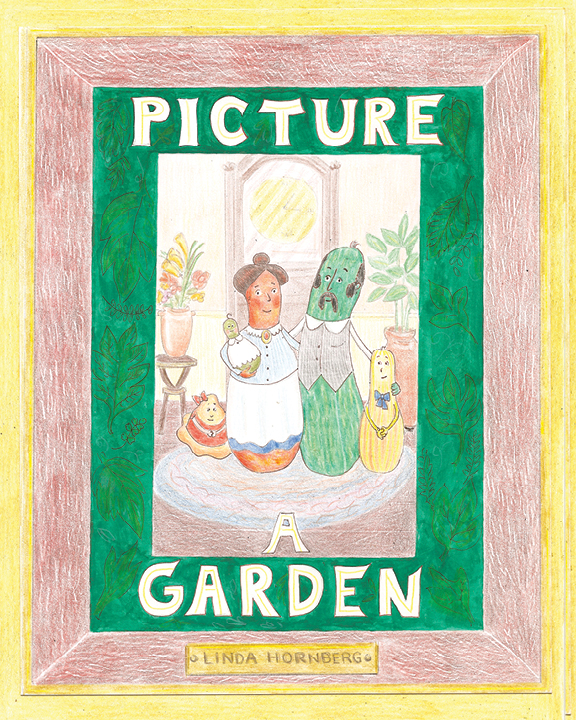
Written and illustrated by Linda Hornberg
Ages: 8+ years | 151 Pages
Publisher: Peanut Butter Publishing | ISBN-13: 978-1598493603
Synopsis: Picture A Garden is your invitation to a fresh look at the wide open possibilities for nurturing a budding interest in the world of gardening. The book was born out of the author’s 25 years of creating an illustrated children’s newsletter.
The stories inside were entirely hand-drawn and based on a lifetime of plant love. Readers are encouraged to overcome their shyness about asking silly gardening questions as their host and author gently lead them into a fun learning environment. It is time to think outside the window box and discover new ways to enjoy plants.
Buy the Book
About the Author
Linda Robin Hornberg grew up in New York, drawing endless paper dolls and adventure comics with her sisters, Brenda and Heidi. She also enjoyed collecting shiny mimosa tree seeds in little bottles, nibbling parsley from Mom’s tomato patch, sword fighting with iris leaves, and flipping cicadas back onto their feet. Her incessant doodling landed her at the Hartford Art School. She received her BFA in printmaking from the School of the Art Institute of Chicago. She is a permanent transplant to Seattle, where she remains an enthusiastic gardener, insatiable reader, unapologetic punster, and incurable cat lady. Please do not offer her your strays.
For more information, visit https://pictureagarden.com/.
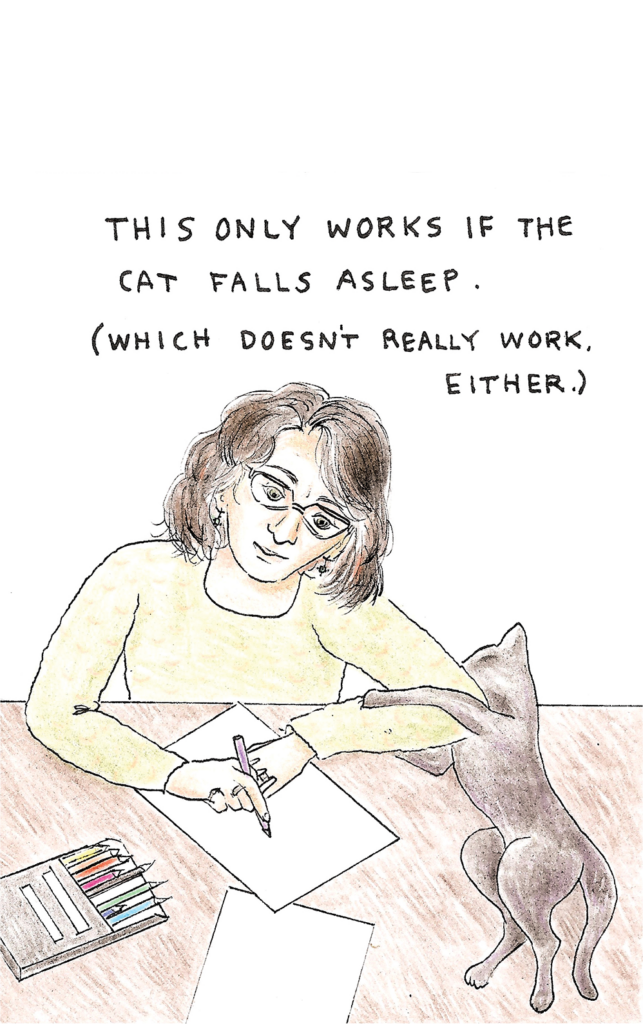
This interview—An Interview with Linda Hornberg, Creator of ‘Picture a Garden‘—was conducted between Linda Hornberg and Bianca Schulze.
*Disclosure: Please note that this post may contain affiliate links that share some commission. Rest assured that these will not affect the cost of any products and services promoted here. Our team always provides their authentic opinion in all content published on this site.


